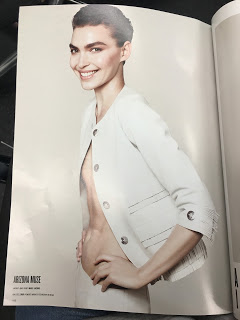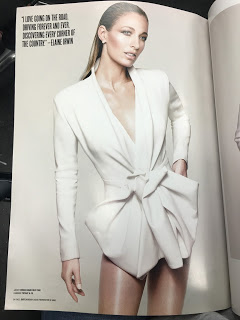Coco Chanel Biography
(1883–1971)
With her trademark suits and little black dresses, fashion designer Coco Chanel created timeless designs that are still popular today.
Synopsis
Fashion designer Coco Chanel, born August 19, 1883, in Saumur, France, is famous for her timeless designs, trademark suits and little black dresses. Chanel was raised in an orphanage and taught to sew. She had a brief career as a singer before opening her first clothes shop in 1910. In the 1920s, she launched her first perfume and eventually introduced the Chanel suit and the little black dress, with an emphasis on making clothes that were more comfortable for women. She died on January 10, 1971.
Fashion and Fragrance Pioneer
Around the age of 20, Chanel became involved with Etienne Balsan, who offered to help her start a millinery business in Paris. She soon left him for one of his even wealthier friends, Arthur “Boy” Capel. Both men were instrumental in Chanel’s first fashion venture.
Opening her first shop on Paris’s Rue Cambon in 1910, Chanel started out selling hats. She later added stores in Deauville and Biarritz and began making clothes. Her first taste of clothing success came from a dress she fashioned out of an old jersey on a chilly day. In response to the many people who asked about where she got the dress, she offered to make one for them. “My fortune is built on that old jersey that I’d put on because it was cold in Deauville,” she once told author Paul Morand.
In the 1920s, Chanel took her thriving business to new heights. She launched her first perfume, Chanel No. 5, which was the first to feature a designer’s name. Perfume “is the unseen, unforgettable, ultimate accessory of fashion. . . . that heralds your arrival and prolongs your departure,” Chanel once explained. The fragrance was in fact also backed by department store owner Théophile Bader and businessmen Pierre and Paul Wertheimer, with Chanel developing a close friendship with Pierre. A deal was ultimately negotiated where the Wertheimer business would take in 70 percent of Chanel No. 5 profits for producing the perfume at their factories, with Bader receiving 20 percent and Chanel herself only receiving 10 percent. Over the years, with No. 5 being a massive source of revenue, she repeatedly sued to have the terms of the deal renegotiated.
Suit and Little Black Dress
In 1925, she introduced the now legendary Chanel suit with collarless jacket and well-fitted skirt. Her designs were revolutionary for the time—borrowing elements of men’s wear and emphasizing comfort over the constraints of then-popular fashions. She helped women say goodbye to the days of corsets and other confining garments.
Another 1920s revolutionary design was Chanel’s little black dress. She took a color once associated with mourning and showed just how chic it could be for evening wear. In addition to fashion, Chanel was a popular figure in Parisian literary and artistic worlds. She designed costumes for the Ballets Russes and Jean Cocteau’s play Orphée, and counted Cocteau and artist Pablo Picasso among her friends. For a time, Chanel had a relationship with composer Igor Stravinsky.
Legacy
In 1969, Chanel’s fascinating life story became the basis for the Broadway musical Coco, starring Katharine Hepburn as the legendary designer. Alan Jay Lerner wrote the book and lyrics for the show’s song while Andre Prévin composed the music. Cecil Beaton handled the set and costume design for the production. The show received seven Tony Award nominations, and Beaton won for Best Costume Design and René Auberjonois for Best Featured Actor.
Coco Chanel died on January 10, 1971, at her apartment in the Hotel Ritz. She never married, having once said “I never wanted to weigh more heavily on a man than a bird.” Hundreds crowded together at the Church of the Madeleine to bid farewell to the fashion icon. In tribute, many of the mourners wore Chanel suits.
A little more than a decade after her death, designer Karl Lagerfeld took the reins at her company to continue the Chanel legacy. Today her namesake company is held privately by the Wertheimer family and continues to thrive, believed to generate hundreds of millions in sales each year.
In addition to the longevity of her designs, Chanel’s life story continues to captivate people’s attention. There have been several biographies of the fashion revolutionary, including Chanel and Her World (2005), written by her friend Edmonde Charles-Roux.
In the recent television biopic, Coco Chanel (2008), Shirley MacLaine starred as the famous designer around the time of her 1954 career resurrection. The actress told WWD that she had long been interested in playing Chanel. “What’s wonderful about her is she’s not a straightforward, easy woman to understand.”
http://www.biography.com/people/coco-chanel-9244165#legacy
| LABEL OVERVIEW |
Chanel is one of today’s best known and most highly sought-after fashion brands, and has been one practically since it was founded by Coco (Gabrielle) Chanel in 1909. Her big break hit when she opened a small shop in Paris in 1910 where she sold her hats. And by 1913, after asserting disdain for resort wear, she launched sportswear: Her take was simpler—flannel blazers, jersey sweaters, and women in trousers, all of which were decidedly against twentieth-century culture memes. Chanel was trendsetting before there were trends. Her post–World War I look gained attention, as she brought on modernism in fashion through beaded dresses in the twenties, the infamous little black dress, as well as a two- or thee-piece suit, which is still a signature Chanel look. By 1921 she introduced Chanel No. 5, and was once quoted as saying "A woman who doesn't wear perfume has no future." No. 5 went on to become one of the best-selling fragrances of all time. After a period away from Paris, Chanel returned after the Second World War in the fifties, a time when Christian Dior was touted as Paris's premiere couturier. However, Chanel rose again with the launch of her chain-link belt and quilted leather bags—today with the interlocking C's—reestablishing Chanel as the definition of classy glamour with an edge. Coco passed in 1971, but the brand continued, even launching their first ready-to-wear collection in 1978. Yet without a lead designer to be the face of the brand, the house struggled to maintain its enchanting reputation for luxury. That is, until Karl Lagerfeld joined in 1983 to revive it to its elite status, which he did with added glamour and sexiness. Today, Chanel stands out in just about every category—couture, ready-to-wear, accessories, jewellery, shoes, and fragrances. What began as a no-nonsense approach to fashion, designed to let women be comfortable while looking dignified, has been translated into classic, tailored style, especially in ready-to-wear, where the traditional tweed Chanel suit with a nipped-at-the-waist cardigan jacket remains one of the most popular—and most copied—fashion staples. Evening gowns tend to have an understated sex appeal and a bit of whimsy, and appear in luxurious fabrics with lots of embellishments. Yet, there is always an undeniable element of the house's founder. "A girl should be two things: classy and fabulous," Coco Chanel once said. Fitting, since that's the absolute embodiment of the label even a century after it was founded.
DESIGNED BY Karl Lagerfeld, 1983 - Present; Yvonne Dudel, 1978 - 1983; Jean Cazaubon, 1978 - 1983; Philippe Guibourge, 1978 - 1983
http://nymag.com/thecut/fashion/designers/chanel/
AN OVERVIEW OF CHANELS CATWALKS, ADVERTISING AND EDITORIAL...
CHANEL CATWALK MOOD BOARD
CHANEL ADVERTSING MOOD BOARD
CHANEL EDITORIAL MOOD BOARD
The 5 P’s – Product, Packaging, Presentation,
Promotion and Price Point...
This unit I will be in depth studying Chanel's brand overall and looking at the five P's. This will also include the beauty part of the unit where I will be studying the trends, designers, S/S 16, the influence and also reference my research to my final images. The mood boards I created above are photos by Chanel and each mood board represents what we have to create for our final images. The whole brief is based on creating S/S 16 and creating two looks for a Chanel catwalk, two for advertising which we can base it round a product and two for editorial which can be made into a double page spread for a magazine. I created three mood boards which have given me a basic idea of what the brand Chanel creates for advertising, editorial and on the runway. When I have narrowed my idea down further I will start creating face and hair charts and create mood boards for each shoot and what the overall look and theme will be.
MAKEUP
FRAGRANCE
SKIN CARE
JEWELLERY
FINE JEWELLERY
WATCHES
FASHION
COLLECTION
BAGS
SUNGLASSES
ACCESSORIES
SMALL LEATHER GOODS
SHOES
CAMELLIAS
SCARFS
HATS
GLOVES
http://www.chanel.com/en_GB/























































